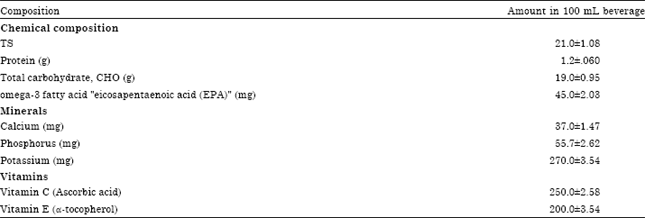Research Article
Utilization Whey in Production of Functional Healthy Beverage “Whey-mango Beverages”
Department of Dairy Science, National Research Centre, Dokki, Giza, Egypt
Wafaa H. Emam
Department of Food Technology, National Research Centre, Dokki, Giza, Egypt
Gamal F. Mohamed
Department of Food Technology, National Research Centre, Dokki, Giza, Egypt
Ahmed F. Sayd
Department of Dairy Science, National Research Centre, Dokki, Giza, Egypt













